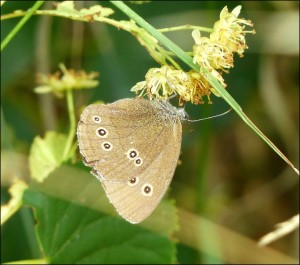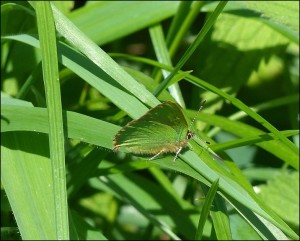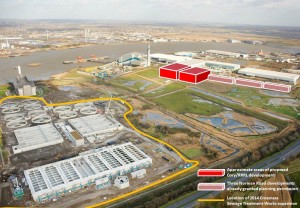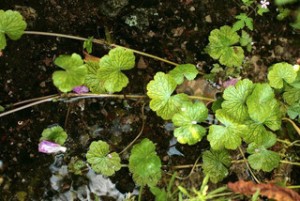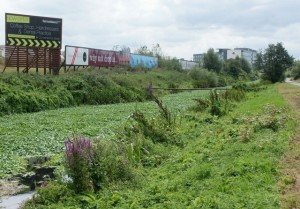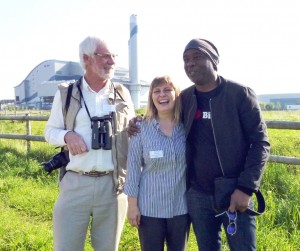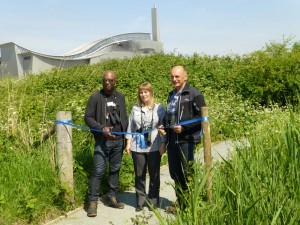‘Bexley Wildlife’ has previously drawn attention to three schemes that will destroy even more of what little is left of the inner Thames marshland on the south side of the river . This post provides more detail on the recently submitted plan that will have a damaging effect on Crossness Nature Reserve, and provides a ‘menu’ of points you can use to write your own personalised letter of objection. It is not yet clear when this will go to Bexley Council’s planning committee, so to be on the safe side please submit your objection (and copy to us) by February 29th, in case it goes to the meeting on 3rd March.
Background
This scheme threatens the Cory/Borax fields on the west side of Norman Road, Belvedere, immediately adjacent to the much-loved Crossness Nature Reserve on Erith Marshes, by far and away one of the most important sites for wildlife in Bexley, with an outline planning application to construct two large ‘data centre’ (computer server) buildings that will significantly exceed the height of the nearby warehousing already surrounding the area (see map/picture at foot of this article). The required ‘ecological survey’, paid for by the company, was done only on one day in September and another in October, outside of the breeding season, and therefore only speculated that red-listed Skylarks might use the site (when it is a public domain fact they breed there), and failed to record the presence of several other known bird species of conservation concern. It admitted that the whole of the open mosaic area, a national priority habitat, would be destroyed. Absolutely no on-site ‘mitigation’ or off-site ‘compensation’ is proposed that will ‘offset’ these negative effects.
The applicant argues that data centres are required to support the digital economy, and that the location provides the potential to use waste energy from the incinerator – though no binding commitment is made to do so. As usual there is a reliance on the National Planning Policy Framework and its presumption in favour of ‘sustainable development’, but the definition of sustainable is so poor that what it actually means is sustained ‘development’. The facility will allegedly contribute to the London target of a 60% cut in CO2 emissions, but even if the waste energy is used there will only be a saving of 5% in this one development , and unless some other equivalent energy user is shut down, a net increase in emissions. Moreover the consent for the incinerator indicates it only has another 22 years to operate. It is claimed that the fields are ‘brownfield’, but according to the NPPF definition, they are not.
The planning application has been submitted in the name of Riverside Resource Recovery Ltd (of the waste incinerator), but this forms part of the wider Cory ‘Environmental’ operation. The company disburses landfill tax credit funds from a Trust it runs. Paradoxically, one of the categories of project that its website says it supports being ‘Protecting the environment, and conserving or promoting biological diversity’. The focus of the Trust’s funding activity in this regard is in areas where it has major facilities, which of course includes Bexley ……………….
Why submit a letter of objection?
If we get time we will try and set up an online petition to increase the number of objectors, but individual letters carry far more weight with the planning committee than signatures on a petition.
But I’ve already signed a ‘petition letter’ …….
We have already amassed over 100 pre-written letters which we asked people to add personal comments to in a box at the bottom and then sign. At that time we didn’t have the details of the application, which we now know to be worse than feared in terms of height, land take and lack of any attempt to make up for the predictable impacts on species already in serious decline. You may wish to make further comments in the light of this.
Putting together your letter
You need to quote the development reference, which is: 15/02926/OUTM and give your name and address.
State that you object to the application full stop, or that you have serious reservations about it and, should it be approved, conditions must be imposed that seriously modify it to try and offset the specific damage to wildlife mentioned above. We suggest a number of points you can make, in three categories – wildlife policy, general sustainability/visual amenity, and personal impacts. This isn’t an exhaustive list, and if you know the site personally, you may have additional thoughts. Do try to include at least one personal impact point. Cut and paste the bits you want into your letter ….
Where to send your letter
Please e-mail a copy to the following: developmentcontrol@bexley.gov.uk
A letter in the form of an e-mail attachment will be accepted.
Your three local councillors (we need to show them people in Bexley care about wildlife). You can find their e-mail addresses here: http://democracy.bexley.gov.uk/mgMemberIndex.aspx?bcr=1
The team organising objections (so we can tell the media how many people we know are objecting ahead of the planning meeting): Donna Zimmer donnazimmer@btopenworld.com
Deadline
In case the application goes to the 3rd March 2016 planning committee meeting, please send your letter on or before 29th February, which should ensure it is counted in the Case Officer’s report to the meeting. It will still be accepted up to 3rd March. If we find before then that the matter will go to a later meeting, we will announce that on ‘BW’.
Some suggested content for your letter ….
Wildlife policy points:
– The applicant’s ecological survey, which is required as part of the planning process, was wholly inadequate, having been done on only two days in the autumn. It therefore failed to record the fact that red-listed Skylark and Ringed Plover are reliant on the Borax fields, part of what little is left of Erith Marshes for breeding, as is Little Ringed Plover because it provides the required type of habitat. With Crayford Marshes also under threat of development, Skylark could be lost from Bexley as a breeding species. The two Plover species nest nowhere else in Bexley.
– The fields also provide foraging areas for Barn Owls at their only Borough breeding site, Linnets (red-listed) for which Erith Marshes is by far the most important site in the Borough, the amber-listed Kestrel which breeds at Crossness and the Snipe (amber) which is in serious decline in the UK and declining across Europe, in large part due to habitat loss.
– As far as the wildlife is concerned, the Borax fields are part of the nature reserve. Loss of these species on the fields will mean a loss to the Crossness/Erith Marshes site as a whole. Quite apart from the important regional and national conservation status of these species, Bexley Council’s policy is to protect and enhance biodiversity in the Borough. That means not losing species locally either. Cory’s application form is completely wrong to state, in answer to the question ‘is there a reasonable likelihood of the following being affected adversely or conserved and enhanced within the application site, OR on land adjacent to or near the application site: a) Protected and priority species’ that the answer is ‘No’ . It is clearly YES.
– The applicant’s own survey identified the site as comprising open mosaic, which is a UK BAP priority habitat, and as having a species-rich flowering plant sward. It acknowledges that the whole of the area of this habitat will be destroyed. There is a target for open mosaic habitat retention in the London Plan to which Bexley is currently making no contribution whatsoever.
– No mitigation of any sort – never mind credible mitigation – nor off-site ‘compensation’, is proposed to ‘offset’ these negative outcomes for wildlife of national conservation concern . The ‘mitigation’ package such as it is merely proposes vegetated walls, leaving a small fraction of the site undeveloped, and some suggestions about maintenance of ditches within the site boundary and grass-cutting, the claimed biodiversity benefits of which are not quantified.
– National Planning Policy Framework states at 1.14 that “When determining planning applications, local planning authorities should aim to conserve and enhance biodiversity by applying the following principles:
- if significant harm resulting from a development cannot be avoided (through locating on an alternative site with less harmful impacts), adequately mitigated, or, as a last resort, compensated for, then planning permission should be refused;
The application, if approved, will diminish biodiversity in relation to the presence and breeding status at Erith Marshes and in Bexley of species of significant conservation concern, and UK and London priority habitat. No alternative ‘development’ site is proposed by the applicant, there is no adequate on-site mitigation for these impacts and no proposal for off-site compensation of any kind. Planning permission should therefore be refused.
General sustainability/visual amenity
– Cory claims it will be bringing ‘brownfield’ land back into use, but under the National Planning Policy Framework it is not ‘brownfield’ land. The small building that was on the south field is long gone and nature has reclaimed the fields from the Borax works waste that was once spread across them.
– According to the figures in the energy report the saving in CO2 emissions from using energy from the incinerator, as opposed to from gas boilers and grid electricity, is about 4.7% year in, year out. It is not clear how this of itself does anything significant to reduce emissions on the way to hitting the London Plan climate target of a 60% reduction over 1990 levels by 2025, unless a facility with rather more than 4.7% more CO2 emissions than this is shut down at the same time. Moreover the documentation repeatedly refers to the potential to use CHP, but lacks a binding commitment.
– The proposed height of buildings at 28.56m (far higher than the other large shed-like constructions in the immediate area) will be visually intrusive to an unacceptable degree, and the impact is grossly underplayed, particularly in regard to the view from the Crossness Nature Reserve. It will further negatively impact visual amenity, with the ‘big skies’ feel of the site under threat from ever more large scale ‘developments’ being allowed to crowd in upon it. They will be the tallest buildings after the Incinerator facility at the east of Crossness Nature Reserve. The claim that this ‘…will offer relief from the more uniform height of the warehouse and industrial buildings to the east.’ insults one’s intelligence.
– Bexley Council’s own ‘Enhancement/mitigation priorities for biodiversity’ document calls for brown roofs on new ‘Industrial buildings anywhere, but especially close to the River Thames’. Cory’s application makes passing reference to some green roofing but seeks to paint this as largely impractical, instead promoting a possible green wall and screening plants of dubious provenance or relationship to the local ecology. This is not good enough. It calls into serious question the credibility of the Council’s policy, particularly as a green/brown roof of the right design could offer suitable Skylark breeding habitat, and thus potential mitigation for one of the major biodiversity losses that will occur if permission is granted.
– The development would compound the amount of night lighting in an already badly light-polluted area, with further negative impacts on wildlife such as bats (European Protected Species) and the nocturnal Barn Owl (a Schedule 1 species that breeds perilously close to the development area).
Personal impacts
These might include:
– That the development would (further) spoil your enjoyment of what was once a much larger and more open area.
– You want to be able to carry on being able to see Skylarks at Crossness and elsewhere in Bexley, and you want your children and grandchildren to be able to do so as well.
– You want to continue to see breeding Ringed Plover and Little Ringed Plover at Crossness. Breeding waders are rare in Bexley.
– You think large open spaces are good for your physical and mental well-being.
– You are a member of Friends of Crossness Nature Reserve and feel that cumulative loss of important areas for nature is undermining the group’s work in supporting Bexley Council’s own policy of protecting and enhancing wildlife in the Borough.
Thanks!
Our bottom line is that the application should be refused. One of the reasons for this is that imposing conditions on the developer to include adequate green/brown roof for at least Skylark breeding would require a redesign of the buildings or even a change of use, to the extent that the application would probably have to be withdrawn and re-worked anyway. A significant number of objections will also contribute to the longer term business of getting the Council to wake up to the fact residents do value our local wildlife, which may help ensure than when biodiversity matters are entirely within its own control it does a better job than now.
Full details of Cory’s (RRRL) application can be found here:
http://pa.bexley.gov.uk/online-applications/applicationDetails.do?activeTab=summary&keyVal=O064AFBE01D00
Going, going, gone? The ongoing loss of wildlife land at Erith Marshes, and missed opportunities to make up for any of this.
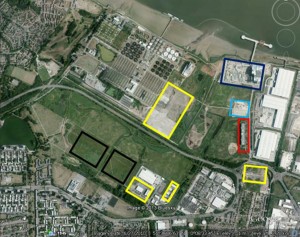
ERITH MARSHES. Google Earth imagery dated 2010 Bexley Council acknowledges the fact that the marshes are a highly important wildlife habitat, but the image above shows that this has not been reflected in planning decisions. Yellow and red boxes: very recently or currently being lost to ‘development’ Dark blue box: previous potential for habitat restoration, now lost to Incinerator until at least 2038. Black box: near-future loss due to planning permission being granted for ‘Veridion Park’ Light blue box: maturing brownfield with important amounts of bare ground/nectar-rich plant mosaic, and breeding Skylark and Ringed and Little Ringed Plover. BNEF asked for these areas to be designated as a SINC or part of the M041 MSINC to meet London mosaic habitat targets. Now under threat from Cory/RRRL planning application.
Map below shows how this proposed ‘development’ will take another huge chunk of open land away from the surrounds of Crossness Nature Reserve
http://www.bexleywildlife.org/wp-content/uploads/2016/02/CNR-map-with-Cory-Fields.pdf
Visual impact. This image was produced before the full details were available. Both blocks will be the same height. The red block on the right gives the best approximation of actual height proposed, being twice as high as most surrounding warehousing. Most of the ground area of the fields will be lost.
http://www.bexleywildlife.org/wp-content/uploads/2016/02/Location-of-proposed-development-areas.pdf
Chris Rose

